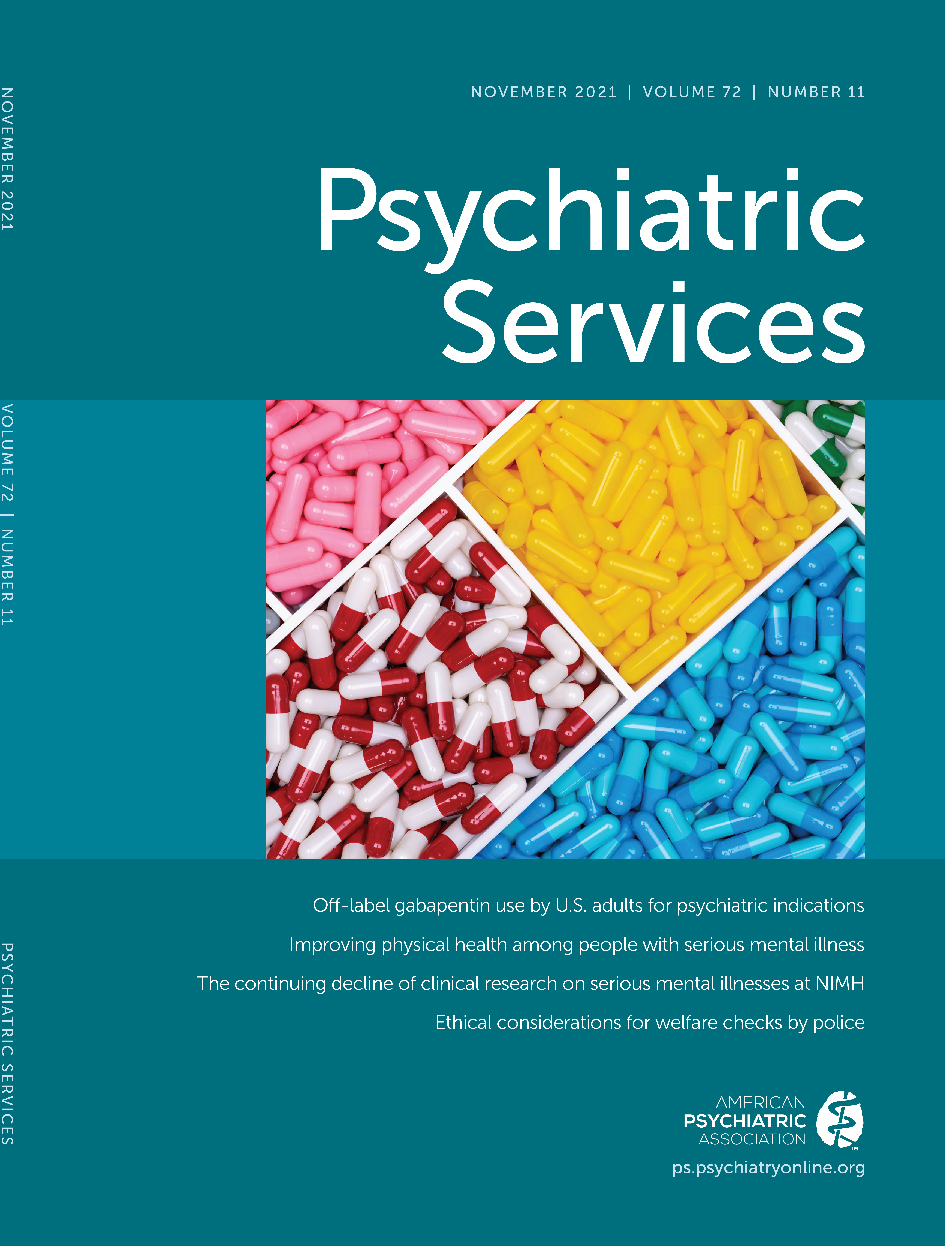Outpatient Off-Label Gabapentin Use for Psychiatric Indications Among U.S. Adults, 2011–2016
Abstract
Objective:
Gabapentin is widely prescribed off label in medical practice, including psychiatry. The U.S. Food and Drug Administration (FDA) warned of risks associated with gabapentin combined with central nervous system depressant (CNS-D) drugs, which are commonly prescribed in psychiatric treatment. This study examined off-label outpatient gabapentin use for psychiatric indications and concomitant CNS-D medication use.
Methods:
National Ambulatory Care Medical Survey data (2011–2016) were used to identify encounters involving gabapentin (gabapentin visits) for adults (ages ≥18) (N=5,732). FDA-approved uses and off-label psychiatric use indications were identified with ICD-9-CM and ICD-10-CM diagnosis codes. CNS-D drugs examined were opioids, benzodiazepines, sedatives-hypnotics, antidepressants, antipsychotics, first-generation antihistamines, and skeletal muscle relaxants. Concomitance was prescription of one or more CNS-D medications at the same visit. Visits were stratified by provider type and specialty.
Results:
Between 2011 and 2016, 2.8% of visits listed gabapentin prescriptions (weighted estimate of 129.6 million visits). A small proportion (<1%) listed an FDA-approved indication. Among off-label gabapentin visits, 5.3% listed a depressive disorder, 3.5% an anxiety disorder, and 1.8% bipolar disorder. Over 6 years, 58.4% of off-label gabapentin visits listed one or more concomitant CNS-D medications, most frequently antidepressants (24.3%), opioids (22.9%), and benzodiazepines (17.3%). Most gabapentin visits were with primary care providers (34.9%) and other provider specialties (i.e., not primary care, neurology, or psychiatry) (48.1%).
Conclusion:
In this nationally representative sample, <1% of outpatient gabapentin use was for approved indications. High concomitant use of CNS-D drugs and off-label gabapentin for psychiatric diagnoses underlines the need for improved communication about safety.



